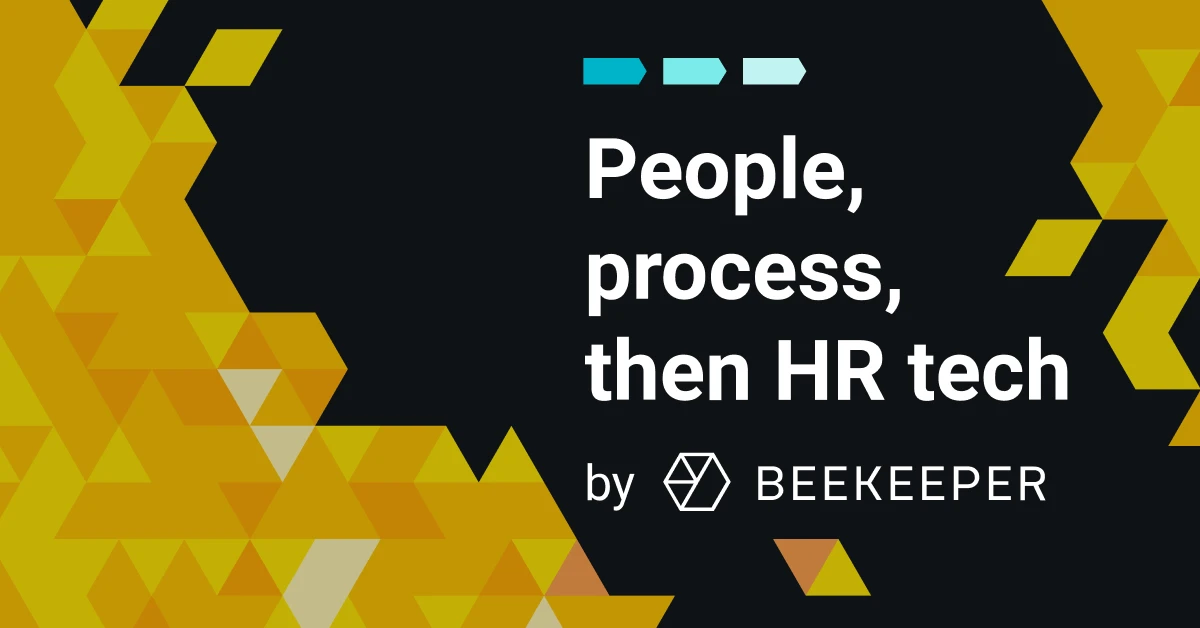Supporting Employee Mental Health |What Frontline Organizations Need to Know

May is mental health awareness month. There’s no better time to look at where frontline industries stand when it comes to improving the mental health and well-being of their employees.
It’s no secret that the pandemic took a heavy toll on the mental health of frontline workers:
- 62% of frontline healthcare workers say that pandemic-related stress negatively affected their mental health
- 57% of frontline workers wish their companies made more efforts in supporting their mental health
- 35% of employees in a frontline workplace reported symptoms of anxiety or depressive disorder
From having to adapt to shifting health and safety rules, to dealing with customer backlash due to supply chain issues, frontline workers have had a lot to deal with during the worst phases of the pandemic and the transition to a new normal.
As frontline industries continue to face a labor shortage, companies are making more efforts to expand their mental health initiatives in order to retain their existing workforce and recruit new talent.
Considering that 58% of frontline workers believe that work stress will say the same or get worse in 2022, it’s up to company leadership and stakeholders to help alleviate the mental health challenges their employees are facing.
Keep reading to find out:
- Key causes of stress for frontline workers
- Specific examples of companies that are prioritizing mental health
- Actionable steps companies can make to better support the mental health of their frontline teams
3 Stressors Affecting Frontline Workers (That Companies Can Act On)
By definition, stress is our body’s response to pressure. In the workplace, stressors can come from the pressure of meeting outside demands or inner expectations.
To better understand what causes stress for frontline workers, let’s first look at what motivates them in the first place. At Beekeeper, we asked frontline workers what motivates them in the workplace.
Here’s what we found:
- Frontline workers are motivated by doing their job well and on time
- Positive feedback from managers and customers is important
- Knowing why and when changes happen is key to making employees feel engaged
When those needs aren’t met, frontline workers can experience stress and burnout, which can lead to poor performance and low retention rates.
Here are the three most common stressors that affect frontline workers:
1. Inadequate Tools and Technology
One of the biggest sources of disconnect in frontline organizations stems from a lack of tools and technology that support the reality of frontline work.
In retail spaces, factory floors, and hotel corridors, frontline workers rarely, if ever, get to sit down and check a computer to get the last updates from their company. Without the right tools and technology to stay informed, employees can start to feel disengaged and stressed about not staying up to date with the latest information.
Another cause of stress for frontline employees is having to adapt to new technology on top of their already assigned tasks. 55% of frontline workers say that they’ve had to learn new technology on the fly without training or practice. Instead of making a frontline employee’s life easier, tools that require too much time and effort to adapt can add to their stress.
2. Lack of Support
Often, the biggest sources of stress for frontline workers come from outside the workplace:
- Scheduling childcare during the workday
- Worrying about health care benefits for family members
- Transportation costs getting to and from their job site
Dealing with these concerns in addition to job-related stressors can quickly lead to burnout, disengagement, and lower levels of employee satisfaction.
3. Not Staying Informed
One of the key findings in our Frontline Trends Report was that frontline employees want to stay informed about when changes happen and why they’re happening. Not knowing why their manager makes a change to their task checklist or why the company is solving supply chain challenges in a certain way can make employees feel disengaged.
When frontline employees aren’t given adequate information about why changes are happening, it can create pressure to find answers to questions like:
- Will this mean that my job is at risk?
- Are my wages affected?
- How does this impact my workday?
- Will I need to learn new skills?
Informing frontline employees about why change happens can help alleviate the stress of trying to fill in the blanks. That way, they can focus on adapting to changes rather than questioning them.
How Companies are Prioritizing Mental Health for Frontline Workers
Let’s look at some examples of companies that are stepping up efforts to improve mental health for their frontline employees.
Cargill
Cargill, a global food corporation that employs thousands of frontline employees, has launched several mental health initiatives, both at a company-wide and site-specific level. At the corporate level, they launched their “How Are You Doing Really?” campaign that aimed to open up the conversation about employee mental health.
With the help of Beekeeper, Cargill started providing links to relevant resources, making it easy for employees to access mental health services through their mobile devices. At the site level, Cargill is using Beekeeper’s Surveys feature to check on employee mental health. They’ve found that for their employees, filling out surveys on their phones can feel less intimidating than an in-person counseling session.
Walmart
Retail giant Walmart is continuing to launch initiatives that help its workforce get help when they’re struggling with their mental health. Employees have 24/7 access to counseling services and support groups at no additional cost.
More recently, Walmart launched Mental Health First Aid training for its associates. The course is meant to help employees identify when their colleagues are struggling and the appropriate steps they should take. Walmart hopes to foster a company culture that is more friendly towards discussing and addressing mental health struggles for frontline workers.
Dream Hollywood
Like many companies in the hospitality industry, Los Angeles-based hotel Dream Hollywood had to re-think their employee experience strategy during and after the pandemic. Not only did they have to ensure staff safety with revamped training and communication tools, but they also had to set up a long-term strategy for prioritizing employee mental health and well-being.
Leadership at Dream Hollywood quickly realized that creating a more positive work environment using digital communication tools would be their main strategy for improving employee mental health. Real-time communication between managers and hotel staff allows teams to check in on a regular basis and identify when an employee is struggling.
10 Actionable Tips for Supporting the Mental Health of Frontline Teams
What are some concrete ways frontline organizations can support their workforce when it comes to reducing stress, burnout, and turnover?
Here are a few to get started:
- Centralize Communication
Streamline communication on a single platform or tool to reduce the stress of having to search for information - Prioritize Employee Recognition
Celebrating small wins like promotions or just a job well done can help employees feel valued - Consider Language Barriers
Make it easy for employees to communicate in their preferred language to encourage them to share mental health challenges - Create Training Programs for Managers
Teach managers how to tell if an employee is struggling to help teams create greater accountability for fostering a positive work environment - Reward Transparency
Admitting to mental health struggles can be difficult. Celebrate when an employee opens up in order to encourage others to do the same - Make Logistics Easy
Helping with logistics like transportation to and from job sites is part of a holistic plan for supporting employee well-being - Focus on Family Support
Offering on-site childcare services and extending free counseling to family members are two examples of supporting the mental health of employees and their loved ones - Listen to Feedback on Change
Hearing what employees have to say about changes in policies or operations can help organizations recognize potential stressors or roadblocks - Monitor Shift Management
Understaffing is one of the effects of a labor shortage. Evenly distributing shifts helps managers reduce overwhelm and burnout - Start During Onboarding
Let employees know about mental health policies as soon as they start the onboarding process. That way, they’ll know when and how to reach out if they’re struggling
Download our annual frontline trends report to learn more!

About the author
Beekeeper
Interested in learning more?
Join 1200+ companies transforming frontline work with Beekeeper. Start your journey today to make every task easier, every team stronger, and every shift smoother.







